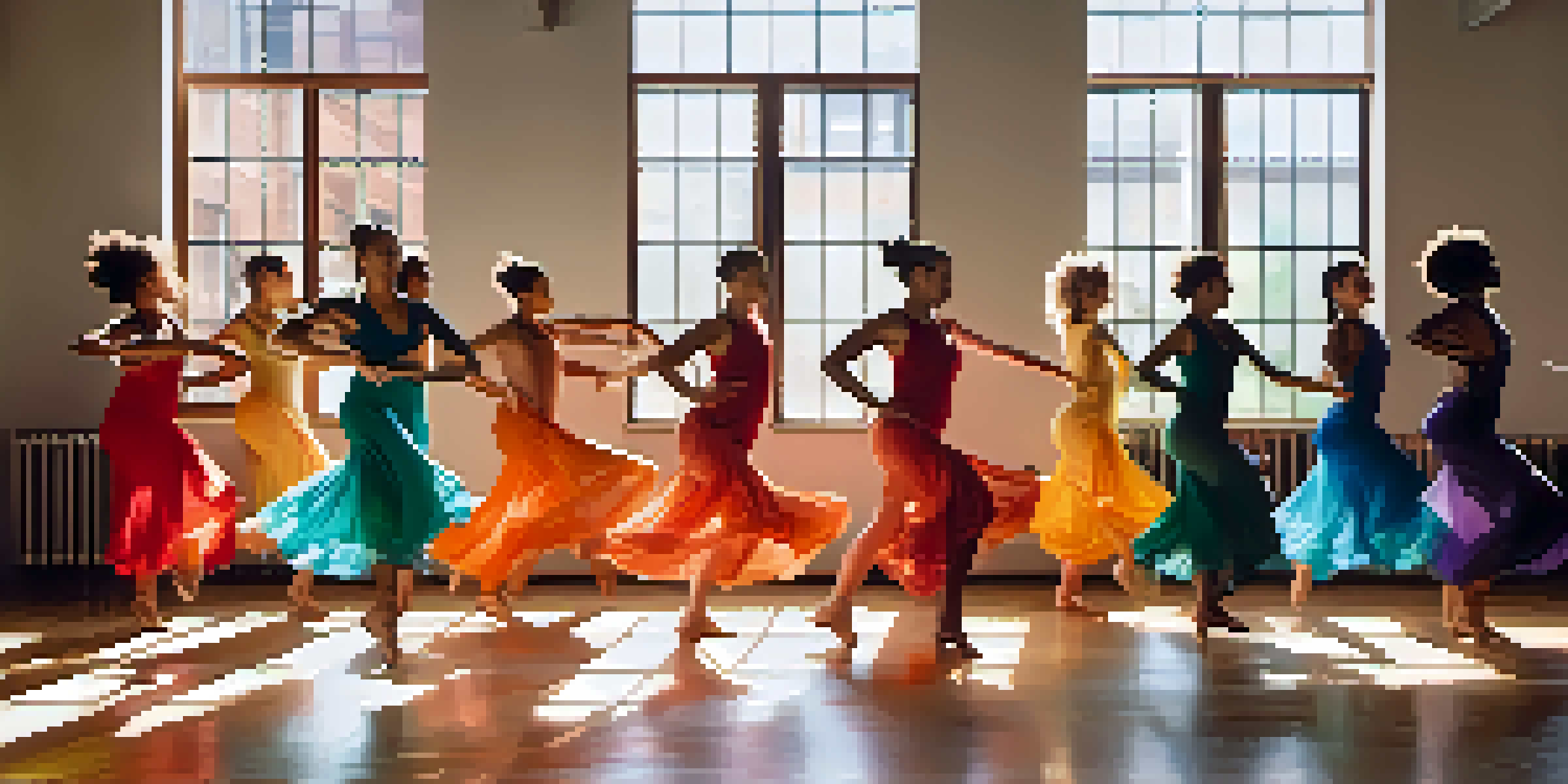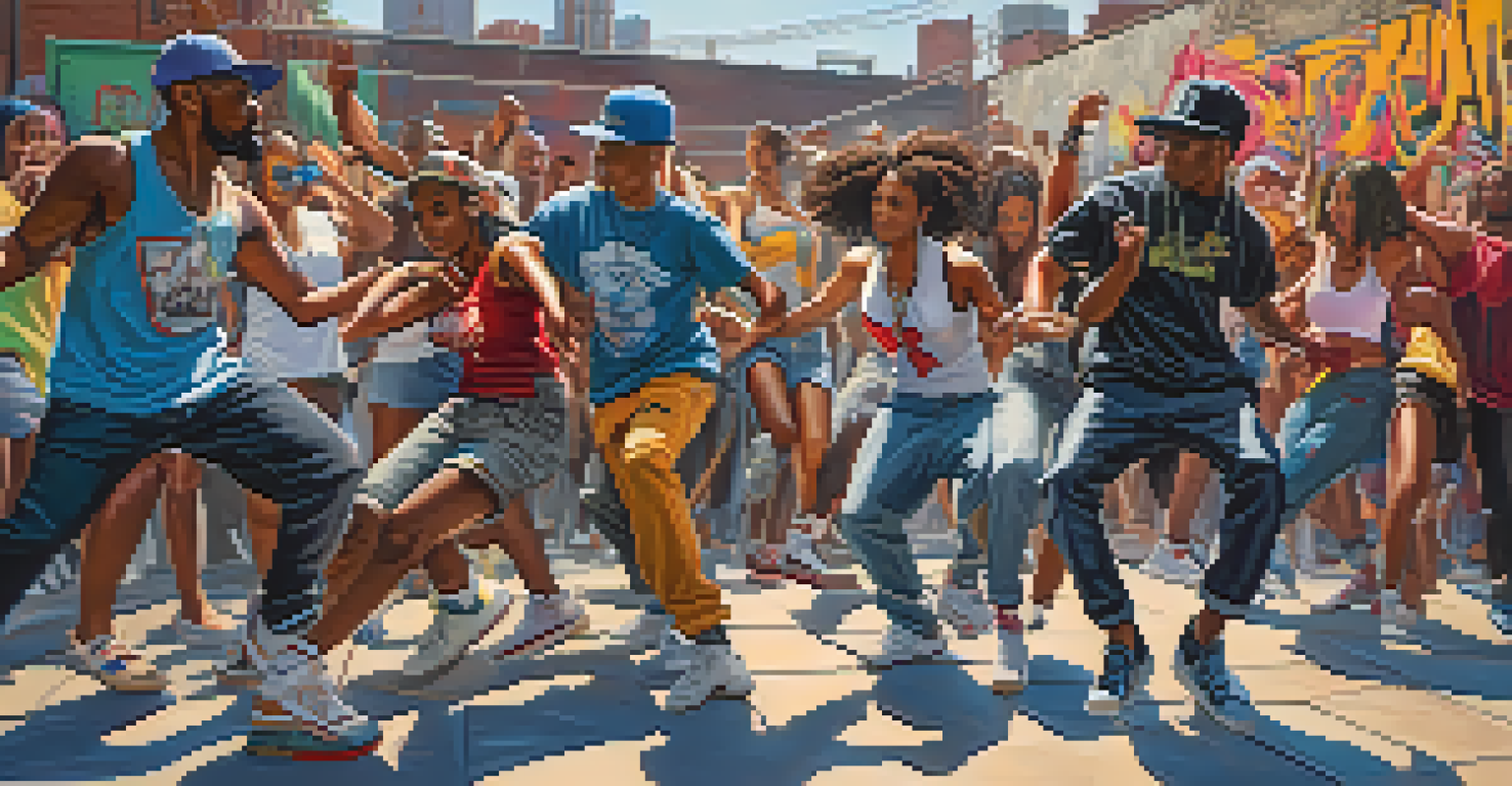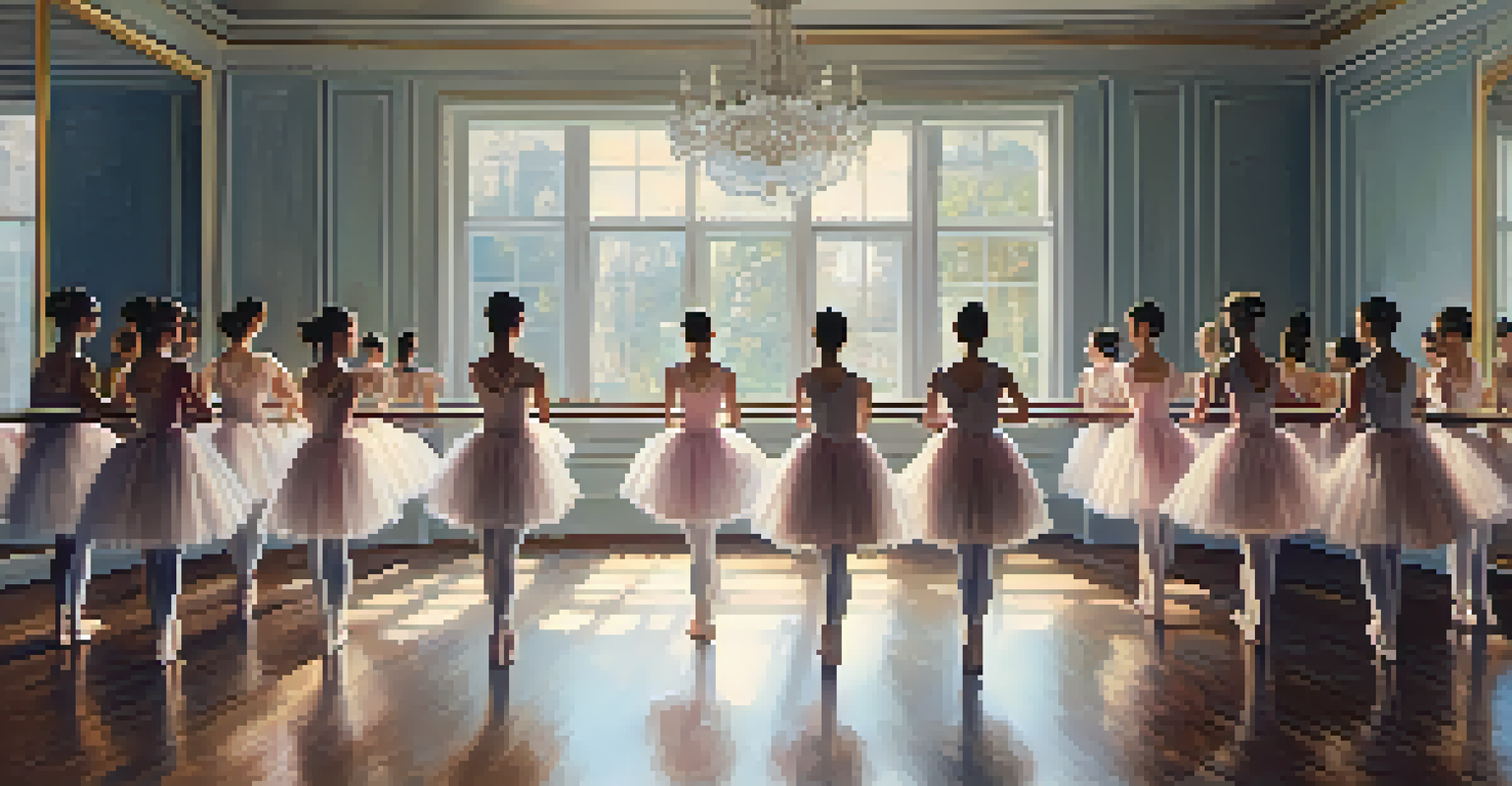Dance Styles That Embrace Neurodiverse Talents

Understanding Neurodiversity in Dance
Neurodiversity refers to the variety of differences in individual brain function and behavioral traits. This concept is gaining traction, especially in creative fields like dance. Embracing neurodiversity means recognizing and valuing the unique talents that individuals with conditions like autism, ADHD, and dyslexia can bring to the art of movement.
The beauty of dance is that it transcends language and allows for expression in many forms.
In dance, neurodiverse individuals often exhibit heightened sensory awareness and remarkable memory skills. These traits can enhance their performance and expression, allowing them to connect with audiences in profound ways. By understanding these differences, we can create more inclusive environments that celebrate diverse dance styles.
Moreover, fostering an inclusive atmosphere not only benefits neurodiverse dancers but also enriches the overall dance community. When dancers from varied backgrounds collaborate, they create a tapestry of creativity that resonates with broader audiences, making dance a truly universal language.
Contemporary Dance: A Canvas for Expression
Contemporary dance is known for its fluidity and emphasis on personal expression, making it an ideal medium for neurodiverse talents. It allows dancers to interpret music and movement in ways that feel authentic to them, without the constraints of traditional forms. This freedom can be particularly liberating for individuals who think and move differently.

In contemporary dance, there are no strict rules or pre-defined movements, which means neurodiverse dancers can explore their unique styles and rhythms. This can lead to innovative choreography that reflects their inner experiences. Dancers often describe this process as a journey of self-discovery, where they find their voice through movement.
Embracing Neurodiversity in Dance
Recognizing and valuing the unique talents of neurodiverse individuals enriches the dance community and promotes inclusivity.
Additionally, contemporary dance companies are increasingly prioritizing inclusivity in their auditions and performances. By embracing neurodiverse dancers, they not only enhance their artistic output but also set a powerful example for the broader dance community, showing that creativity knows no boundaries.
Hip-Hop: Rhythm and Individuality Unite
Hip-hop dance is all about rhythm, self-expression, and individuality, making it a natural fit for neurodiverse dancers. The energetic beats and improvisational nature allow dancers to showcase their unique styles while getting lost in the music. This type of dance can be a powerful outlet for those who may struggle with traditional communication methods.
Creativity is intelligence having fun.
Many neurodiverse dancers find a sense of belonging in hip-hop culture, where diversity is celebrated and encouraged. The emphasis on personal style means that every dancer can bring their flair to the floor, whether through breaking, locking, or popping. It's a space where creativity flourishes and individual stories are told through movement.
Moreover, hip-hop communities often prioritize collaboration and support, creating a nurturing environment for neurodiverse talents. Workshops and battles provide opportunities for dancers to connect, learn from one another, and grow. This sense of camaraderie can be incredibly empowering, making hip-hop not just a dance style, but a community of acceptance.
Ballet: Finding Structure in Fluidity
While ballet is often viewed as a highly structured form of dance, it can also accommodate neurodiverse talents in remarkable ways. The discipline of ballet teaches focus and precision, which can benefit dancers who thrive in structured environments. For many, the beauty of ballet lies in its ability to blend discipline with personal expression.
Neurodiverse individuals may find ballet's set movements and routines comforting, as they provide a clear framework within which to explore creativity. This structure can help dancers channel their energy and focus on the beauty of the art form. Furthermore, ballet's emphasis on storytelling through movement allows dancers to express their unique perspectives.
Dance Styles Foster Individuality
Different dance genres, like contemporary and hip-hop, offer neurodiverse dancers the freedom to express themselves authentically.
Many ballet companies are now recognizing the importance of inclusivity and have started to adapt their training methods. By offering specialized classes and workshops, they create platforms for neurodiverse dancers to shine. This not only broadens the talent pool but also enriches the performances, allowing for a more diverse representation of stories.
Jazz Dance: A Celebration of Individual Style
Jazz dance is characterized by its lively rhythms and improvisational style, making it a fantastic avenue for neurodiverse dancers to shine. The genre encourages personal expression, allowing dancers to interpret music in their unique ways. This aspect resonates deeply with those who may feel confined by more structured dance forms.
The improvisational nature of jazz dance can be particularly liberating for neurodiverse individuals, as it invites spontaneity and creativity. Dancers can experiment with their movements, responding to the music and their own instincts. This not only fosters creativity but also builds confidence as they learn to trust their bodies.
Jazz dance classes often incorporate elements of theater and storytelling, providing additional layers of expression. For neurodiverse dancers, this blend of movement and narrative can be especially empowering, allowing them to share their experiences and emotions through dance. Ultimately, jazz dance celebrates individuality, making it a perfect fit for diverse talents.
Creative Movement: Freedom to Explore
Creative movement is all about exploration and expression, making it an excellent choice for neurodiverse individuals. This form of dance encourages participants to use their bodies in intuitive ways, freeing them from the expectations of traditional dance styles. It’s like letting a child play in a field—there are no rules, just endless possibilities.
In creative movement classes, dancers are often guided to explore their feelings, thoughts, and sensations through movement. This can be particularly beneficial for neurodiverse individuals who might find verbal communication challenging. By expressing themselves through dance, they can share their inner worlds in a way that feels safe and natural.
Creating Inclusive Dance Spaces
Establishing welcoming and accessible environments is essential for nurturing neurodiverse talent and enhancing creativity in dance.
Furthermore, creative movement fosters a sense of community and collaboration. Dancers are encouraged to share their ideas and create together, leading to a supportive environment where everyone’s contributions are valued. This sense of belonging can be incredibly affirming for neurodiverse dancers, reinforcing the idea that their unique perspectives are worthy of celebration.
The Importance of Inclusive Dance Spaces
Creating inclusive dance spaces is crucial for nurturing neurodiverse talent. Studios and dance companies must prioritize accessibility, providing environments that are welcoming and accommodating for all dancers. This can include sensory-friendly spaces, flexible schedules, and tailored teaching methods that cater to diverse learning styles.
When dance spaces embrace neurodiversity, they open the door to a wealth of creativity and innovation. Dancers who feel accepted and valued are more likely to thrive, pushing the boundaries of what dance can be. This mutual respect between teachers, dancers, and the community fosters a vibrant atmosphere that benefits everyone involved.

Moreover, inclusive dance spaces can serve as powerful examples for other artistic communities. By demonstrating the beauty of diversity in dance, we can inspire broader conversations about acceptance and representation in the arts. Ultimately, when we celebrate neurodiverse talents, we enrich the entire dance landscape, making it a more colorful and dynamic world.